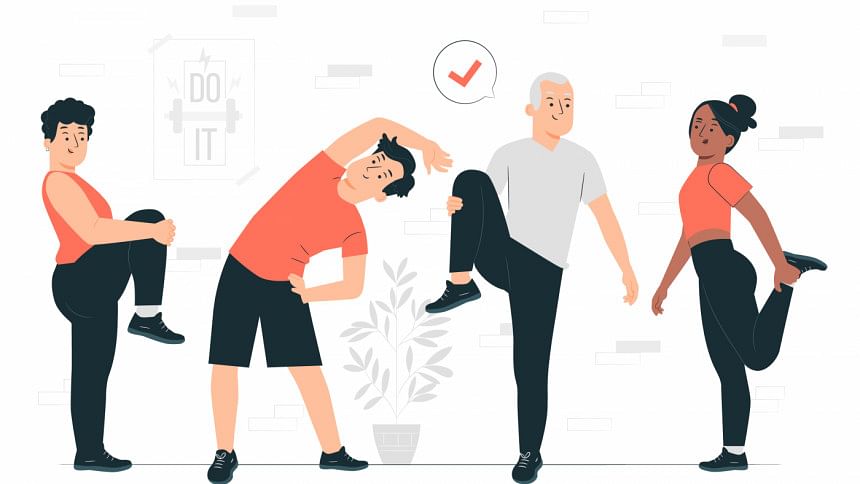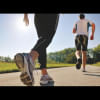Step back from your desks and move a little

If you are reading this piece, then let me remind you to take a step back, stand up and move a little. I am serving you this reminder since today is World Day for Physical Activity, officially recognised by the World Health Organization (WHO) in 2002.
The day aims to promote the positive role physical activity can play in our lives and encourage us to get moving for better health. This year's theme is "Have a Good Time! Be Active!", which emphasises the importance of having fun while being physically active.
According to WHO, physical activity has significant health benefits for our hearts, bodies, and minds. Regular physical activity has been proven to help prevent and manage non-communicable diseases such as heart diseases, stroke, diabetes, and several kinds of cancers. Moving regularly prevents hypertension, helps maintain a healthy body weight, and can improve mental health, our quality of life and well-being. It is also known to reduce symptoms of depression and anxiety, enhances thinking, and learning skills, ensures healthy growth and development in young people. In addition to the multiple health benefits, the WHO's Global Action Plan on Physical Activity 2018-2030 has stipulated that societies that are more active can generate additional returns on investment including a reduced use of fossil fuel, cleaner air and less congested, safer roads, which can help to achieve several goals under the Sustainable Development Agenda 2030.
Despite these well documented benefits, many people around the world are not sufficiently active. According to WHO, globally, 1 in 4 adults (27 percent) do not meet the recommended levels of physical activity. More than 80 percent of the world's adolescent population is insufficiently active. Physical inactivity has been recognised by WHO as the fourth leading risk factor of death worldwide; people who are insufficiently active have a 20 percent to 30 percent increased risk of death compared to people who are sufficiently active.
This is a very real challenge for the WHO Global Action Plan which aims to achieve the global target of a 15 percent relative reduction in the prevalence of physical inactivity by 2030. High levels of physical inactivity affect not only individuals over their life course, but also places a financial burden on health services and society as a whole. Analysing the most recent health and economic data from 194 countries, one recent study reported that the global cost of inaction on physical inactivity would reach approximately $47.6 billion per year.
What is the state of physical activity?
Like other Global South countries, Bangladesh is also plagued by a lack of physical activity in its growing population.
According to the National STEPS Survey for Non-communicable Diseases Risk Factors in Bangladesh (2018), 1 in 8 adults are not sufficiently active and women are less active than men. As per WHO's Bangladesh Physical Activity Profile 2022, physical inactivity is 16 percent in adult men and 40 percent in adult women. Inactivity rate is slightly higher in elderly adults aged 70 or above (19 percent in men and 46 percent in women).
According to the Bangladesh School Based Student Health Survey in 2014, 3 in 5 adolescents are not sufficiently active. As per the WHO's Bangladesh Physical Activity Profile 2022, 2 in 3 adolescents are physically inactive (63 percent among boys and 69 percent among girls). Another recent population-based study found that 50.3 percent adolescent girls and 29 percent of adolescent boys are not sufficiently active.
What exactly do we mean by physical activity?
According to WHO, physical activity is defined as any bodily movement produced by skeletal muscles that results in energy expenditure. In fact, any movement can be labeled as physical activity if it moves the muscles of our body that require the use of energy and burns calories. It can include things like doing housework, gardening, playing with the kids, or taking the stairs instead of the elevator. The higher the intensity of your activity, the better your chances of staying healthy.
Exercise and sports are two important components of physical activity. Exercise is planned, structured and repetitive physical activity that we do to improve physical condition and health. Sports is an activity that requires physical exertion, skill, hand-eye coordination, and is governed by certain rules and regulations. Sports are often competitive and
requires regular physical exercise and training. Participating in sports improves our physical and mental well-being, and plays an important role in building social connections and relationships.
Heart rate can be used to assess intensity of physical activity; the higher the heart rate, the higher your intensity. According to the American Heart Association, moderate-intensity activity should increase your heart rate by 50 percent to about 70 percent while vigorous-intensity activity should raise your heart rate by 70 percent to 85 percent.
Any form of physical activity can provide some health benefits if they are undertaken regularly and is of sufficient duration and intensity.
How much physical activity do we need to do every day?
According to the WHO's Physical Activity Guidelines, adults aged 18 or above should do at least 150 minutes of moderate-intensity physical activity or at least 75 minutes of vigorous-intensity physical activity every week.
An alternative recommendation is to do 30 minutes of moderate to vigorous physical activity every day. For children and adolescents aged 5 to 17 years, one hour of moderate to vigorous physical activity per day is recommended. WHO has also offered different physical activity guidelines for children under 5 years of age, pregnant and postpartum women, people living with chronic conditions, and children, adolescents and adults living with disability. Depending on your physical ability and fitness, you can participate in any physical activity that suits you and helps you feel better and live better. To find the right physical activity for you, do what you enjoy, do a variety of activities of your choice, and build a habit of doing them regularly. Physical activity, exercise or sports with family and friends can be more enjoyable and it can help you to stay healthy and have a great time!
Given the established benefits of regular physical activity in improving our health and wellbeing, it needs to be included in our daily lives and we should take every opportunity to be physically active. If we do not start today, then when? Let us begin our journey to get active today - let us make this our World Physical Activity Day pledge: move more, sit less and be active to stay healthy and well.
Dr Asaduzzaman Khan is Associate Professor, School of Health and Rehabilitation Sciences at The University of Queensland, Brisbane QLD 4072 Australia and Chair of Active Healthy Kids Bangladesh.

 For all latest news, follow The Daily Star's Google News channel.
For all latest news, follow The Daily Star's Google News channel. 










Comments